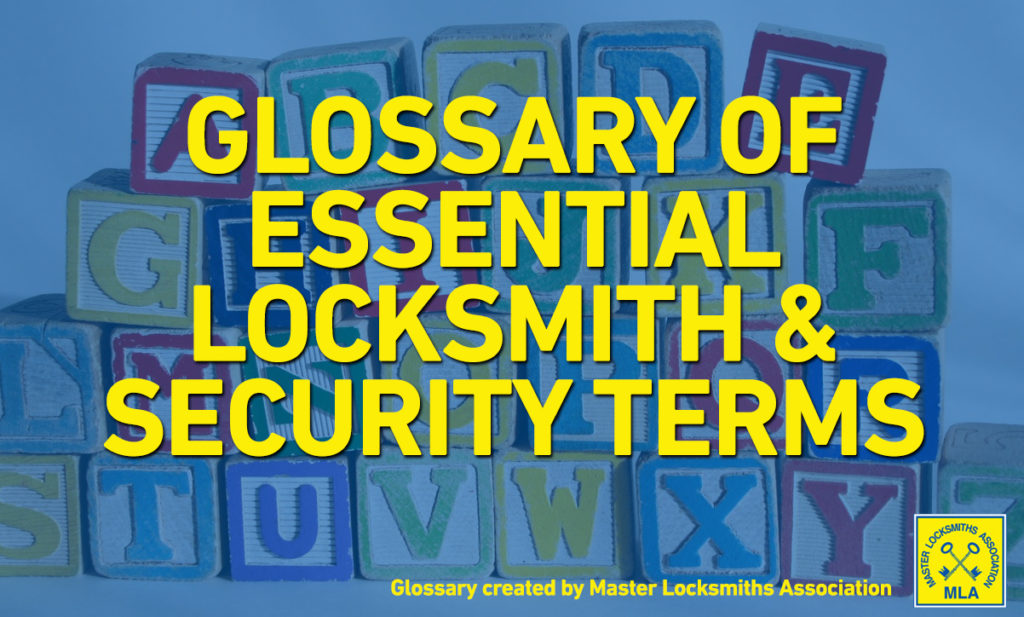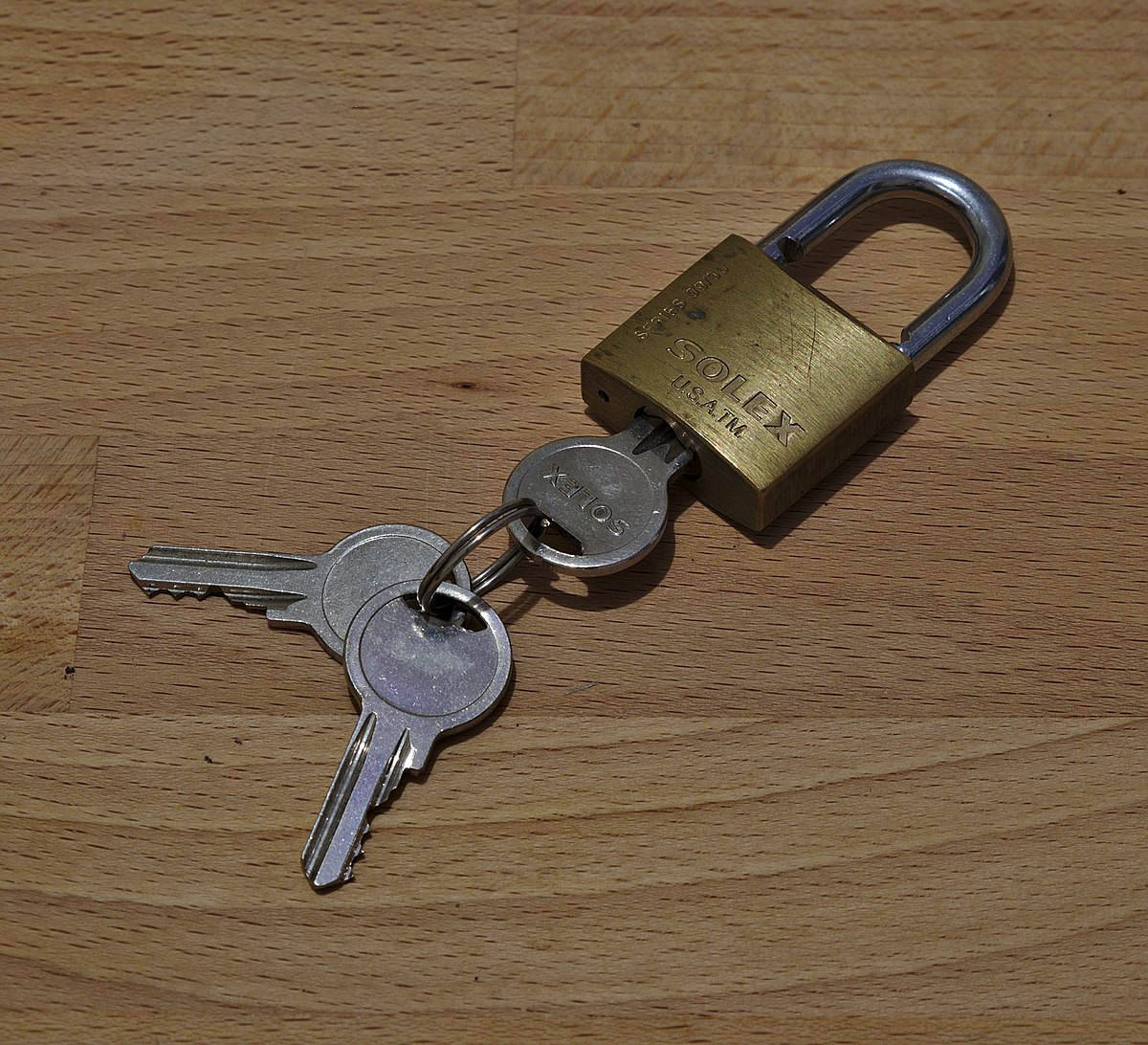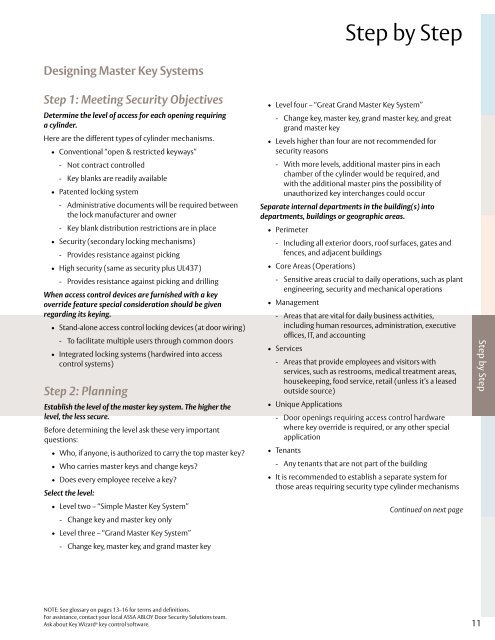There is also another pad to the north. There you will use the Eye of Veeshan key purchased from the vendor to port to your quest npcs for PoSky. The final pad is to the west, which takes you to Noble Dijan (Island 1.5), In order to use the pad you will need to buy a Key of Swords from the Key Master. Key of the Misplaced (Key to Isle 2). In this guide, you’ll find detailed, easy-to-follow instructions for rekeying any Schlage lock cylinder. Each section—organized by product function— includes a list of features and benefits to help guide your conversation with customers and reinforce their choice in Schlage—the one most trusted by consumers.
A master key operates a set of several locks. Usually, there is nothing special about the key itself, but rather the locks into which it will fit. A good master key combination should contain one of the highest cuts in at least one space. This prevents someone from recutting another key in the system to produce a master key. The best master key cuts will have a combination of odd and even adjacent numbers.
One cool thing about pin-and-tumbler locks is that you can re-configure them to fit an existing key (provided that the key is for the same lock design). The advantages of this are obvious: You can add new locks to your home or business without attaching a bunch of new keys to your key ring.
To make a new key for an existing lock, you cut a series of notches in the key so that it raises each of the upper pins just above the shear line. Essentially, you cut a pattern in the metal that matches the pattern of the pins in the lock. To change a lock so that it fits an existing key, you simply work in the opposite direction: You change the pattern of the pins in the lock so that it matches the pattern of notches in the key. If the lock is designed with a universal keying system, any locksmith can re-key the lock in no time. You can also get locks re-keyed at most hardware stores.
Advertisement
Advertisement
In this basic six-pin lock set, you can see how this re-keying works. When you open up the shafts in the cylinder and empty them out, you have six springs and 12 tiny pins. All of the upper pins are exactly the same size. The remaining six pins (the lower pins) will be of various lengths to match up with the notches on the key.
The process of re-keying a lock is very simple. The locksmith removes all of the pins from the cylinder. Then, drawing from a collection of replacement pins of various sizes, the locksmith selects new lower pins that fit perfectly between the notches of the key and the shear line. This way, when you insert the new key, the lower pins will push all the upper pins just above the shear line, allowing the cylinder to turn freely. (This process may vary depending on the particular design of the lock.)

It doesn't matter how long the upper pins are (since they all rest above the shear line when the key is inserted), so the locksmith simply re-inserts the six original upper pins that came with the lock. And that's all there is to re-keying. The entire process takes only a few minutes.
Master keys are an interesting technology somewhat related to lock picking (because they're means of getting past locks without the main key).
Some locks are designed to work with two different keys. The change key will open only that specific lock, while the master key will open that lock and several others in a group. In these locks, a few of the pin pairs are separated by a third pin called a master wafer or spacer.

Master Keying Guide Meaning
When three pins are combined in a shaft, there are two ways to position the pins so they open the lock. The change key might raise the pins so that the shear line is just above the top of the master wafer, while the master key would raise the pins so the shear line is at the bottom of the master wafer. In both cases, there is a gap at the shear line and the key is able to turn.
In this lock design, the lowest pin would be the same length in each lock in the group, but the master wafer would vary in length. This lets one person, say a building manager, access many different locks, while each individual key-holder can open only his or her own lock.
In the next section, we'll look more closely at the differences between lock picking by locksmiths and illegal lock picking.

A master key system is a key plan whereby selected keys can open a number of pre-defined doors. It helps maintain better control, saves key replacement costs and is convenient, as there are a lower number of keys in circulation. It also provides quick access to all rooms within the premises, e.g. for security staff and management personnel. This is not only convenient but can save lives in case of emergency.
In the above example, the ‘Master Key’ would open all doors and lock types in the property and is held by the caretaker. The Sub-Master A opens the main entrance and all the locks on the ground floor, and is held by the manager of the company that occupies that floor. The same applies to Sub-Master B.
In addition, each employee has one key that opens the main entrance, their own office door and their filing cabinets. These keys work with different types of lock, e.g. door locks, cabinet locks, padlocks, etc., as long as the cylinder inside them is of the same model.
Product details
dormakaba master key systems are among the most secure in the world. Here is what you get with a dormakaba master key system:
- A system designed specifically for your needs, regardless of the type of building, e.g. residential, commercial, small, large, complex, etc.
- A tailor-made key plan including a logical key and cylinder numbering system that is flexible enough to last.
- A flexible master key system, able to grow and change with your organisation over the long term.
- Reduced number of keys to enhance control and lower the cost of your key replacement.
- Integration into your access control system if required, so you have an overview in a single tool of mechanical keys as well as electronic badges.
- Key clips in many different colours (depending on model), so you can allocate one colour per zone or floor, which is a great organisational help.

A master key plan is the essence of modern mechanical access control. It is recommended for all types of building, from residential houses and apartment blocks through to medium-sized or large organisations with a hundred keys or more. This becomes particularly important in the following cases:

Master Keying Guide
- Keeping control of who holds which key to which room for security reasons.
- To eliminate the need to carry too many keys, i.e. convenience.
- For safety reasons, e.g. when emergency services need quick, round-the-clock access to all rooms without having to search for the right key, e.g. in nursing homes, aged care facilities or in student accommodations.
Product downloads
